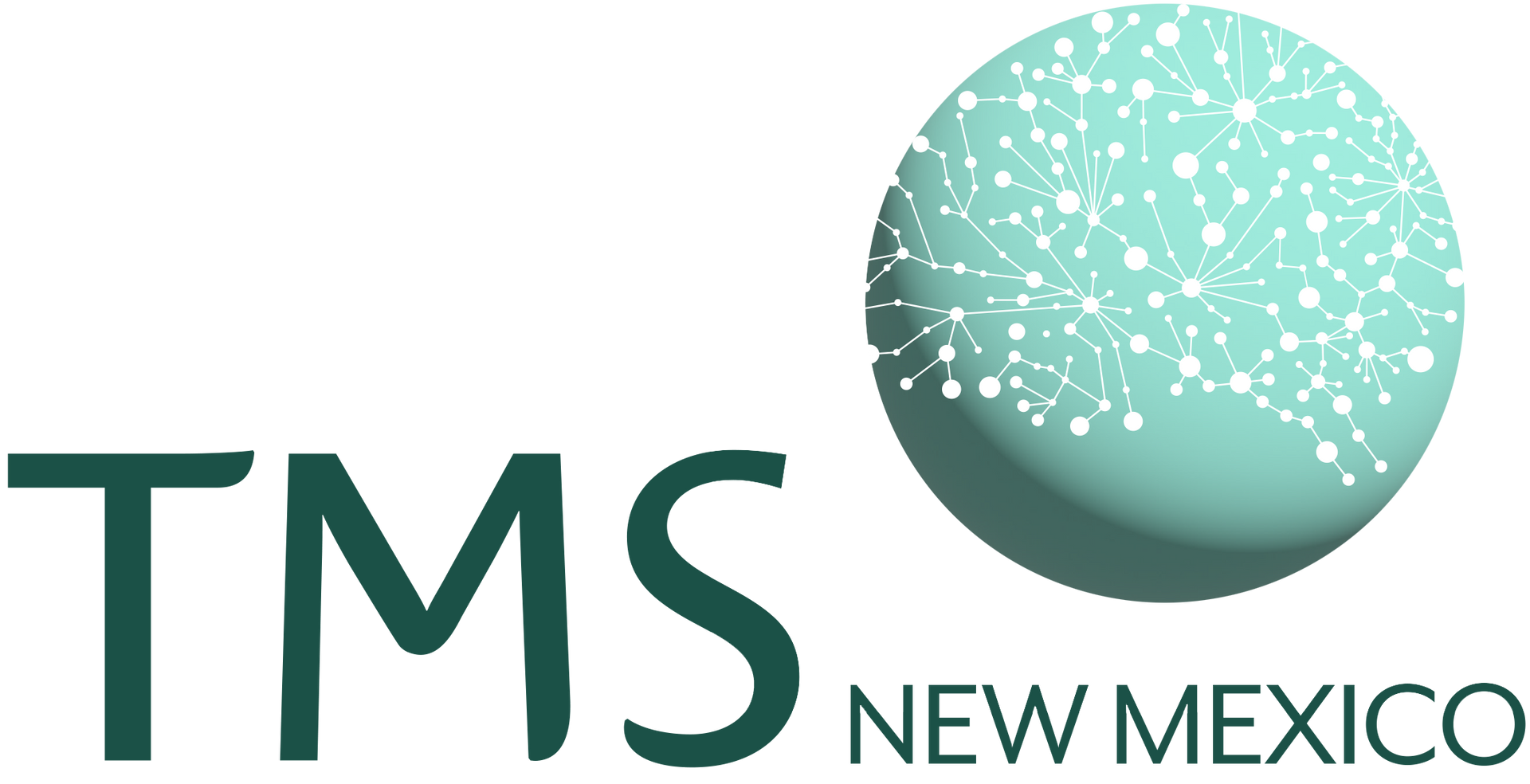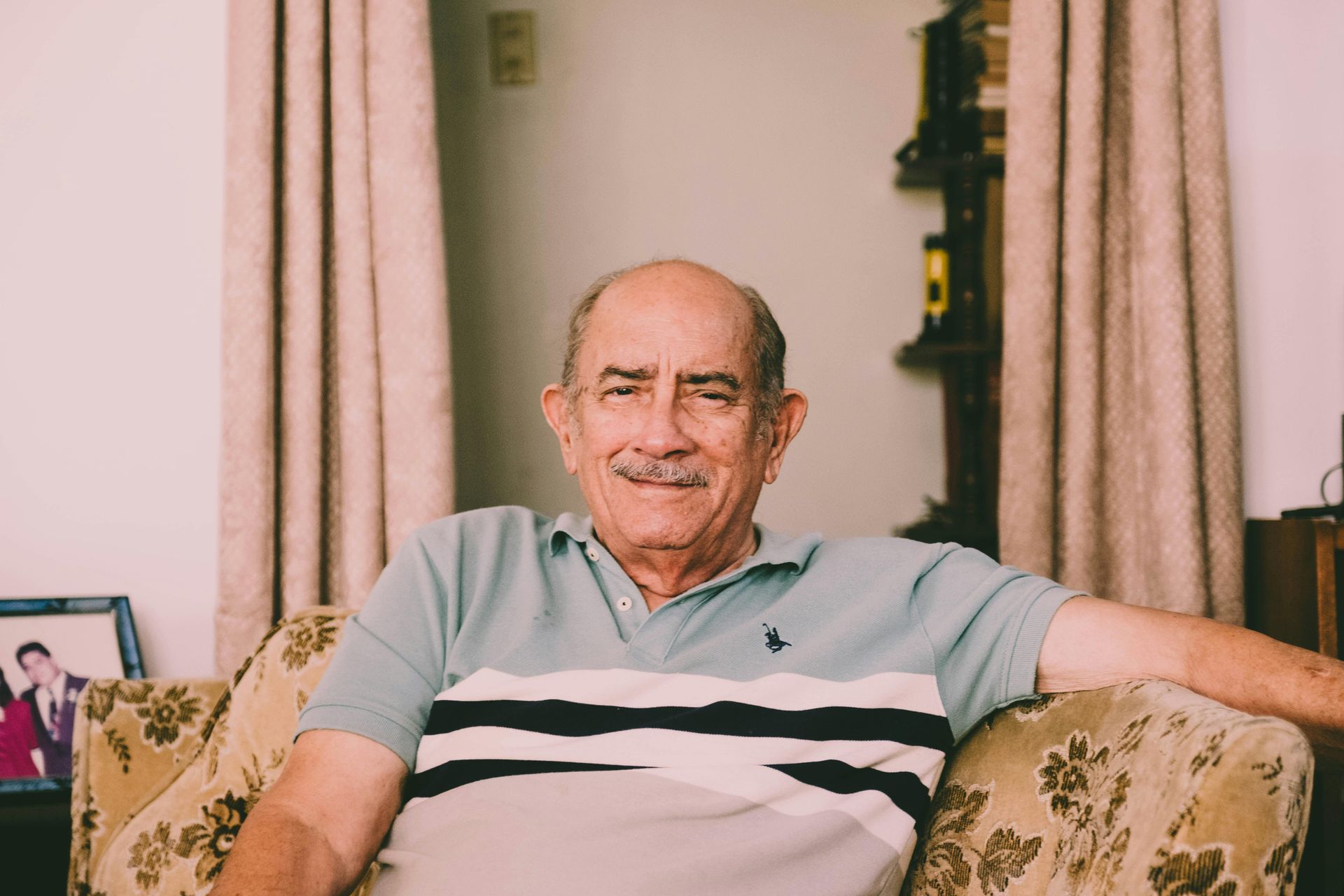300 Paseo De Peralta Suite 208, Santa Fe, NM 87501
Optimizing Motor Function: The Role of TMS for Stroke
For stroke survivors struggling with motor function recovery, Transcranial Magnetic Stimulation (TMS) offers new hope. TMS uses electromagnetic pulses to stimulate brain areas critical for motor function recovery. In addition, often the compensatory activity post stroke, can be more uncomfortable than the areas which have lost function. TMS can both stimulate to reactivate areas of lost function, and inhibit areas that may be over functioning to compensate.
In this article, you’ll discover how TMS improves motor skills, its success rates, and what the treatment involves, providing a comprehensive guide for those considering this innovative therapy. Have you suffered a stroke and reside near Santa Fe? We can help!
What You Should Know About TMS for Stroke
- Transcranial Magnetic Stimulation (TMS) is a non-invasive therapy that enhances motor recovery in stroke patients by modulating cortical excitability and promoting neuroplasticity.
- Repetitive TMS (rTMS) has demonstrated significant improvements in upper and lower limb motor functions, making it a promising adjunct to traditional rehabilitation methods.
- TMS also addresses non-motor symptoms, including cognitive impairment and post-stroke depression, thereby improving overall quality of life for stroke survivors.
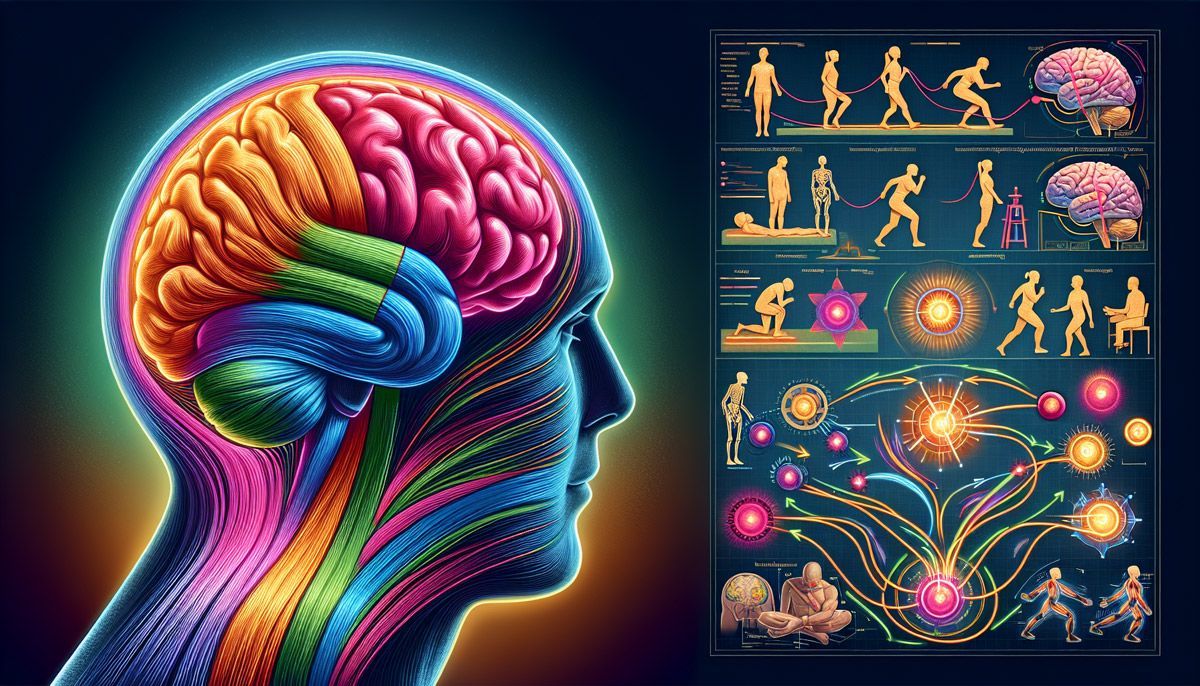
Optimizing Motor Function: The Role of TMS for Stroke Recovery
Transcranial Magnetic Stimulation (TMS) is a groundbreaking non-invasive tool designed to improve motor function and support recovery for stroke patients. TMS influences neuron activity by sending short electromagnetic pulses to specific brain areas, modulating cortical excitability crucial for recovery. This modulation helps recalibrate brain activity, fostering an environment conducive to recovery.
One of the most promising aspects of TMS is frequency repetitive transcranial magnetic stimulation (rTMS). This technique has shown effectiveness in enhancing neurological deficits following a stroke, leading to significant improvements in motor function. The repetitive nature of the pulses helps reinforce neural pathways, aiding in the restoration of motor functions that were impaired by the stroke.
The magic of TMS lies in its ability to enhance neuroplasticity, which plays a vital role in restoring motor functions. Neuroplasticity refers to the brain’s ability to reorganize itself by forming new neural connections. TMS leverages this capability, helping the brain compensate for damaged areas by strengthening other pathways, including the motor cortex. This process is crucial for stroke patients who need to recover lost motor functions.
As we explore the various facets of TMS in stroke recovery, we’ll uncover how this innovative therapy is pushing the boundaries of traditional rehabilitation. From upper limb recovery to addressing non-motor symptoms, TMS is proving to be a versatile and powerful tool in the quest for enhanced motor recovery.
Rehabilitation & Recovery
In the industrialized world, stroke is the leading cause of long-term disability among adults. Each year, countless chronic stroke patients find their lives abruptly altered by this debilitating condition. The road to recovery is often long and challenging, with many patients struggling to regain their former levels of function and independence.
Traditional rehabilitation methods have been the backbone of stroke recovery, offering a range of therapies designed to kickstart the healing process. These conventional approaches, while beneficial, often leave room for improvement, particularly in the recovery of fine motor skills and cognitive functions. This is where TMS, a less conventional but highly promising treatment, comes into play in post stroke rehabilitation.
Magnetic therapy, specifically Transcranial Magnetic Stimulation (TMS), is emerging as a powerful adjunct to traditional rehabilitation. TMS aims to enhance neuroplasticity and improve motor function by targeting specific brain areas with electromagnetic pulses. This blog post will explore the potential of TMS to revolutionize stroke recovery, offering new hope to those affected by this life-altering condition.
Understanding Transcranial Magnetic Stimulation (TMS)
Transcranial Magnetic Stimulation (TMS) is a non-invasive brain stimulation technique that has shown great promise in enhancing motor recovery for stroke patients. TMS promotes neuroplasticity and aids in recalibrating brain activity by stimulating targeted neurons with electromagnetic pulses. This modulation of cortical excitability is crucial for facilitating the recovery of motor functions, alongside tDCS transcranial direct current stimulation (which we also do at our Santa Fe clinic).
The interhemispheric inhibition model provides a framework for understanding how TMS can promote neuroplasticity. This model suggests that stroke disrupts the balance of activity between the brain’s hemispheres. TMS helps restore this balance by either inhibiting the overactive hemisphere or exciting the underactive one, thereby promoting recovery.
Repeated studies have demonstrated that rTMS can improve neurological deficits following strokes, particularly in enhancing upper limb recovery. These clinical trials have shown significant improvements in motor function for stroke survivors, providing a strong evidence base for the effectiveness of TMS.
While TMS is not yet widely recommended by stroke experts, it is considered a promising therapeutic strategy. Patients interested in TMS should consult with medical professionals to discuss its potential benefits and accessibility. Understanding the basics of TMS is the first step towards appreciating its role in stroke rehabilitation

TMS for Upper Limb Motor Function Recovery
Transcranial Magnetic Stimulation (TMS) is particularly effective in enhancing upper extremity function in stroke patients. Following TMS treatment, many patients have reported significant improvements in:
- Arm Function
- Strength
- Speed
- Fine Motor Skills
This improvement in upper limb motor function is a testament to the therapy’s potential to transform stroke rehabilitation. Patients often express the value they find in receiving feedback during their TMS treatment. Understanding their recovery progression not only boosts their morale but also empowers them to actively participate in their rehabilitation journey. This positive feedback loop enhances the overall effectiveness of the treatment.
Overall, TMS plays a significant role in supporting upper limb recovery in stroke patients. The positive reports and high acceptance among patients highlight the therapy’s potential to become a standard part of stroke rehabilitation programs. As we move forward, exploring the application of TMS for lower limb recovery will further illustrate its versatility and effectiveness.
TMS for Lower Limb Motor Function Recovery
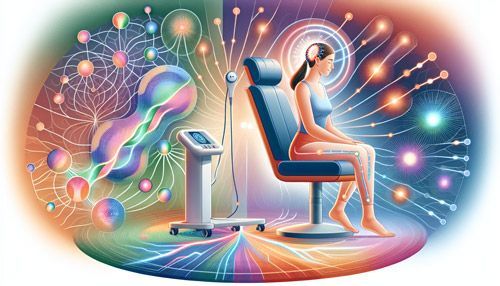
The application of TMS extends beyond upper limb recovery to include lower limb motor function recovery in stroke patients. Repetitive Transcranial Magnetic Stimulation (rTMS) has demonstrated efficacy in enhancing lower limb motor abilities by inducing neuroplastic changes. These changes are crucial for regaining mobility and improving the overall quality of life for stroke survivors.
By inducing neuroplastic changes, rTMS helps the brain rewire itself to compensate for the damage caused by the stroke. This process is vital for stroke patients who need to recover lower limb motor function to regain independence and mobility. The effectiveness of TMS in this regard highlights its potential as a versatile tool in stroke rehabilitation.
Exploring the optimal timing and frequency of TMS treatments, as well as reviewing case studies and clinical trials, will provide a deeper understanding of how to maximize the benefits of this therapy for lower limb recovery.
Optimal Timing and Frequency
Administering TMS in the early phase post-stroke can lead to improved recovery outcomes for lower limb motor functions. The timing of the treatment is crucial, as early intervention can capitalize on the brain’s heightened state of plasticity following a stroke.
The frequency of TMS application also significantly influences recovery rates. Specific frequencies can be tailored to meet the unique needs of each patient. The most commonly observed treatment duration for rTMS targeting lower limb recovery is between 15 to 20 minutes per session over a period of 2 to 3 weeks. This duration has been found to be effective in promoting significant improvements in motor function.
Understanding the optimal timing and frequency of TMS treatments is essential for maximizing the benefits of this therapy. By tailoring the treatment to the individual needs of each patient, healthcare providers can enhance the effectiveness of TMS in promoting lower limb motor recovery.
Case Studies and Clinical Trials
Clinical trials have provided robust evidence supporting the effectiveness of TMS in enhancing motor function recovery for stroke patients. For instance, high-frequency rTMS (20 Hz) has been associated with significant long-term improvements in motor function. These trials highlight the potential of TMS to bring about substantial and sustained recovery.
One notable finding from these trials is the improvement in walking speed among stroke survivors. This enhancement in mobility is particularly important for improving the independence and quality of life for stroke patients. The positive treatment outcomes observed in these trials underscore the potential of TMS as a cornerstone of stroke rehabilitation.
Examining the results of case studies and clinical trials helps us better understand the practical applications of TMS and its impact on lower limb motor recovery. This evidence base strengthens the case for incorporating TMS into standard stroke rehabilitation protocols.
Addressing Non-Motor Symptoms with TMS
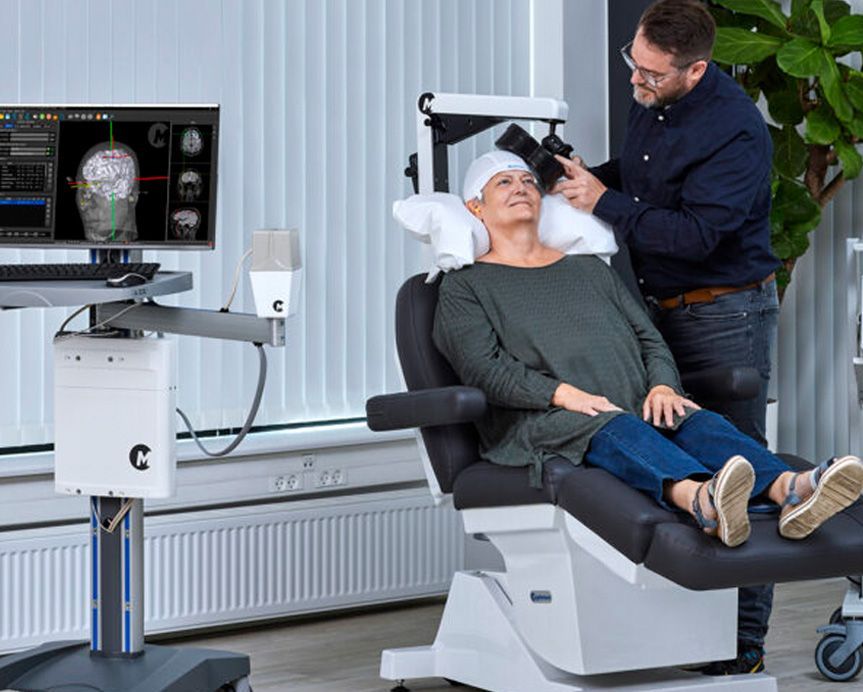
While TMS is highly effective in improving motor function, its benefits extend to addressing non-motor symptoms of stroke as well. Transcranial Magnetic Stimulation (TMS) has shown positive effects on improving cognitive function in stroke patients. TMS can enhance cognitive recovery post-stroke by targeting specific brain regions.
Furthermore, TMS is recognized as a safe and effective method for alleviating symptoms of mood disorders, particularly depression, among stroke patients. The ability to address both cognitive and mood-related symptoms significantly improves the overall quality of life for stroke survivors.
Exploring the specific applications of TMS for post-stroke depression and cognitive impairment will provide a comprehensive understanding of its role in stroke rehabilitation. These non-motor benefits highlight the versatility of TMS in supporting holistic recovery for stroke patients.
TMS for Post-Stroke Depression
Depression is a common and debilitating issue among stroke survivors, significantly impacting their recovery and quality of life. The emotional toll of a stroke can be overwhelming, making it difficult for patients to engage fully in their rehabilitation efforts. Fortunately, research indicates that TMS can significantly alleviate depressive symptoms in stroke survivors, improving overall emotional well-being.
Repetitive TMS (rTMS) has demonstrated significant effectiveness in reducing depressive symptoms in post-stroke patients, often outperforming control conditions. By targeting specific areas of the brain associated with mood regulation, TMS helps to rebalance neural activity, leading to a reduction in depressive symptoms. This improvement in mood can have a profound impact on a patient’s willingness and ability to participate in other forms of rehabilitation.
The ability of TMS to address post-stroke depression not only enhances emotional well-being but also supports overall recovery. Alleviating depressive symptoms better equips patients to engage in physical rehabilitation and other therapeutic activities, further promoting their recovery journey.
TMS for Cognitive Impairment
Cognitive impairment is another significant challenge faced by stroke survivors. TMS has emerged as a promising intervention for enhancing cognitive functions in stroke patients. TMS can improve attention and executive tasks, which are critical for daily functioning, by stimulating specific brain regions.
Studies have shown that TMS can lead to improvements in global cognitive function and activities of daily living in stroke patients, particularly through the use of high-frequency rTMS. These cognitive enhancements not only improve the quality of life for stroke survivors but also facilitate better rehabilitation outcomes overall.
The application of TMS for cognitive impairment underscores its versatility and potential as a comprehensive tool in stroke rehabilitation. Addressing both motor and cognitive deficits, TMS offers a holistic approach to recovery, significantly enhancing the lives of stroke survivors.
Practical Considerations for TMS Treatment
Determining patient eligibility for TMS treatment involves assessing several factors, including the location, size, and chronicity of the stroke. Subcortical stroke patients, for instance, have shown improvements in movement kinematics following rTMS treatments. Identifying the right candidates for TMS is crucial for achieving optimal treatment outcomes.
Contraindications for rTMS in stroke recovery include specific adverse effects that may impact the patient adversely. Pre-treatment assessments are essential to identify individuals at higher risk for adverse reactions, including potential transient cognitive issues. This careful screening helps in managing side effects and ensuring patient safety.
Research is ongoing to identify patient characteristics that can predict effective responses to TMS treatment. Understanding these predictors will aid in optimal patient selection, ensuring that those who are most likely to benefit from TMS receive it. This targeted approach enhances the overall effectiveness of the therapy.
Creating an optimal treatment setting involves not only the right equipment but also a conducive environment that supports patient well-being. This holistic approach to treatment settings enhances the overall effectiveness of TMS therapy in stroke rehabilitation.
Summary
For those seeking TMS treatment for stroke recovery near Santa Fe New Mexico, TMS New Mexico is an excellent option. Our mental health clinic offers TMS therapy for various conditions, including post-stroke recovery. Potential patients can schedule a complimentary consultation to explore their treatment options and learn more about TMS.
TMS New Mexico provides personalized treatment plans tailored to the unique needs of each patient. By utilizing Transcranial Magnetic Stimulation (TMS) as a non-invasive method to stimulate brain cells, our clinic has shown promising results in stroke rehabilitation. The adoption of TMS by clinics in Santa Fe reflects its growing recognition as an effective treatment for neurological disorders, including stroke recovery.
What is Transcranial Magnetic Stimulation (TMS)?
Transcranial Magnetic Stimulation (TMS) is a non-invasive technique that employs electromagnetic pulses to stimulate specific neurons in the brain, facilitating neuroplasticity and supporting recovery from conditions like stroke. This method offers a promising avenue for enhancing brain function and rehabilitation.
How does TMS help in stroke recovery?
TMS aids stroke recovery by modulating cortical excitability and enhancing neuroplasticity, which are essential for restoring motor functions. Repetitive TMS (rTMS) has proven effective in improving neurological deficits and motor function in stroke patients.
Can TMS be used to treat depression in stroke survivors?
Yes, TMS can effectively alleviate depressive symptoms in stroke survivors, enhancing their emotional well-being and aiding in their recovery.
Where can I find TMS treatment for stroke recovery near Santa Fe, New Mexico?
You can find TMS treatment for stroke recovery at TMS New Mexico in Santa Fe, where we offer complimentary consultations to discuss your available options. We can help!
Cited Sources:
- Wexler, Anna et al. “Off-Label Promotion of Transcranial Magnetic Stimulation on Provider Websites.” Brain stimulation vol. 14,3 (2021): 723-724. doi:10.1016/j.brs.2021.04.013
- Antczak, Jakub et al. “Transcranial Magnetic Stimulation as a Diagnostic and Therapeutic Tool in Various Types of Dementia.” Journal of clinical medicine vol. 10,13 2875. 28 Jun. 2021, doi:10.3390/jcm10132875
- Bretecher CA, Verot A, Teschuk JM, Uehara MA, Fitzgerald PB, Koski L, Lithgow BJ, Moussavi Z. Quantitative Analysis of Factors of Attrition in a Double-blind rTMS Study for Alzheimer Treatment. Alzheimer Dis Assoc Disord. 2024 Aug 8. doi: 10.1097/WAD.0000000000000633. Epub ahead of print. PMID: 39115246.
- Cappon, Davide et al. “Transcranial magnetic stimulation (TMS) for geriatric depression.” Ageing research reviews vol. 74 (2022): 101531. doi:10.1016/j.arr.2021.101531

HELPFUL LINKS TO LEARN MORE
Book an appointment at our mental health clinic in Santa Fe, New Mexico. You are not alone!

READY TO GET STARTED?
At TMS New Mexico of Santa Fe, we specialize in advanced neurocare and psychiatric services aimed at improving mental health for residents of Santa Fe County and Los Alamos County. Our tailored treatment plans are designed to specifically target depression, empowering our clients to lead more fulfilling lives. If you or a loved one struggles with depression, anxiety, OCD, PTSD, or another mental health issue, we may be able to help.
SERVICE AREAS
- SANTA FE
- CAÑONCITO
- SETON VILLAGE
- GALISTEO
- GLORIETTA
- LA CLENEGA
- LOS CERRILLOS
- MADRID
- TESUQUE
- CHUPADERO
- POJOAQUE
- LOS ALMOS
- WHITE ROCK
- NAMBE
- PECOS
- SANTA FE
- CAÑONCITO
- SETON VILLAGE
- GALISTEO
- GLORIETTA
- LA CLENEGA
- LOS CERRILLOS
- MADRID
- TESUQUE
- CHUPADERO
- POJOAQUE
- LOS ALAMOS
- WHITE ROCK
- NAMBE
- PECOS
- TAOS
MAIN LINKS
CONTACT
300 Paseo De Peralta Suite 208, Santa Fe, NM 87501
- Mon - Fri
- -
- Sat - Sun
- Closed
COMPANY
NPI# 1811753767

All Rights Reserved | TMS New Mexico
